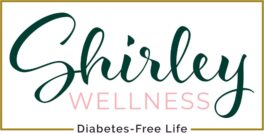Hunger, Desire and a Craving - Telling the Difference
Do you have difficulty distinguishing between true hunger (when you have fasted for several hours and your stomach is empty), a desire to eat (eating because there is food around and not being particularly hungry) and cravings (an intense urge to eat)?
According to Judith S. Beck PhD of the Beck Institute for Cognitive Therapy and Research, “ Most dieters have difficulty distinguishing between true hunger, a desire to eat and a craving”
Think about a time in the past where you had finished a rather large meal - did you have any thoughts such as I’m still hungry, I think I’ll have seconds….I think I will have a pudding because there is still room.
If so, you confused hunger with a desire to eat.
How do you know when you’re really hungry? Think about three recent occasions when the following occurred:

- You hadn’t eaten for many hours and felt ravenous. That empty sensation in your stomach, often accompanied by stomach rumblings, was hunger.
- You ate a big meal and yet you still wanted to continue to eat more. That was desire.
- You had a very strong urge to eat, which was accompanied by a feeling of tension and an unpleasant yearning sensation in your mouth, throat or body. That was a craving.
How To Monitor Your Hunger:
Pick a day to note what you experience before, during and after you eat.
Before you sit down to eat each meal or snack, notice how your stomach feels.
Rate your hunger on a scale of 0 - 10, with 0 being not hungry at all and 10 being the hungriest that you have ever felt.
Halfway through the meal, notice how your stomach feels.
Write a description of this sensation in the chart. Then rate your hunger.
Rate your hunger once again when you have finished eating.
Notice your thoughts - do you still want to eat more?
Do you feel a physical sensation in your stomach?
Is it more in your mouth or throat? What does it feel like?
How strong are your sensations?
Do you want to eat a specific food ( which probably means you’re desiring or craving) or any food will do (which might mean you are still hungry)?
Describe sensations on your chart.
Twenty minutes after you’ve finished eating rate your hunger and then describe any physical sensations or desire to eat that you’re experiencing in the chart.
| Helen’s Hunger Monitoring Chart | ||
| Time | How my stomach feels | Hunger Strength |
| Before breakfast | Very empty, a bit of growling | 8 |
| Halfway through breakfast | A little fuller | 5 |
| Immediately after breakfast | Mildly full, but want to eat seconds: feel an urge in my mouth and throat | 2 |
| 20 mins after breakfast | Full, satisfied, glad I didn’t eat too much | 0 |
Tip!
If it has been anywhere from 20 minutes to up to 3 hours since you’ve eaten a reasonable-sized meal, remind yourself that any urge to eat is probably due to a desire to eat, not hunger.
It’s really important to pay attention to how you feel in relation to eating food. That is why doing this exercise is vital. Once you learn to tell the difference between hunger and craving, dieting will be easier. Then when you achieve your weight loss goals and you are in maintenance, you can then easily know the difference of whether you are hungry or not and label supposed hunger as a desire or a craving. This in itself will help you stay in maintenance and not regain the pounds lost.
What To Do Next?
CHECK OUT 'YOUR FOOD CRAVINGS GUIDE' - How to handle your top 5 food cravings
https://shirleywellness.com/your-food-cravings-guide
Join our Private Facebook Community and connect with like-minded individuals for inspiration, encouragement and ideas.
Read my Article here on How To Eat - Your Hunger and Fullness Signals



